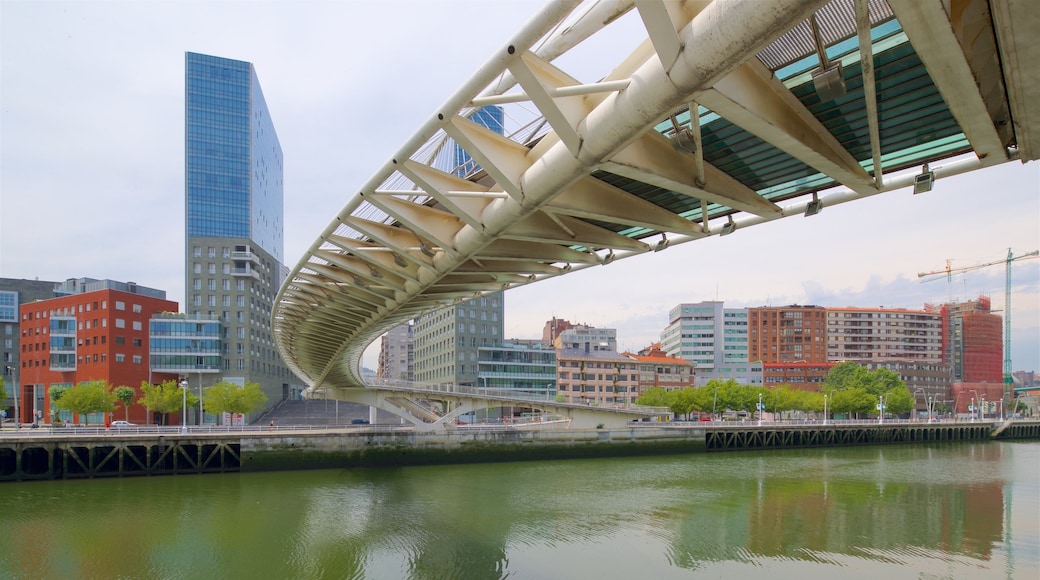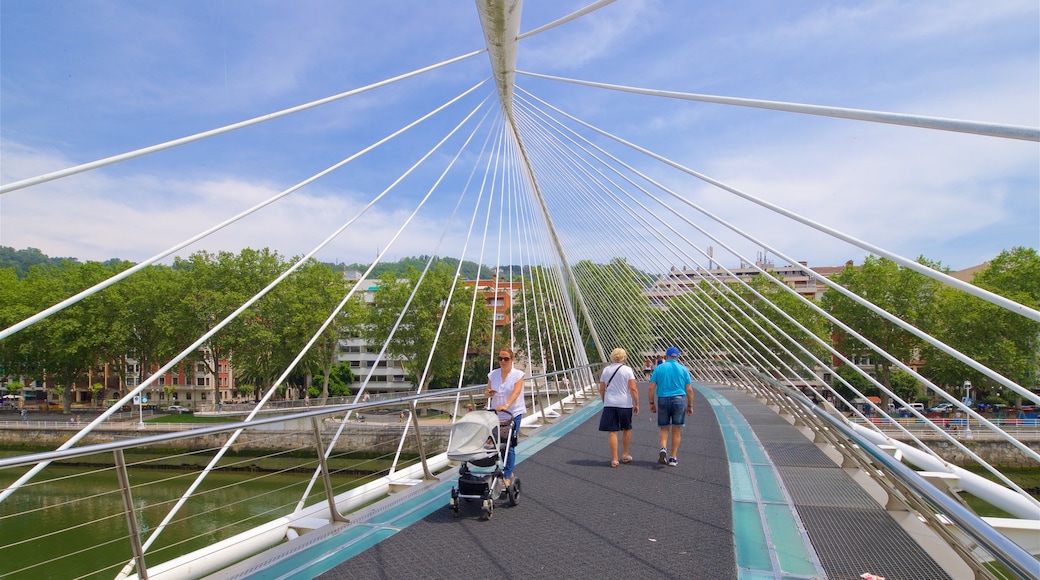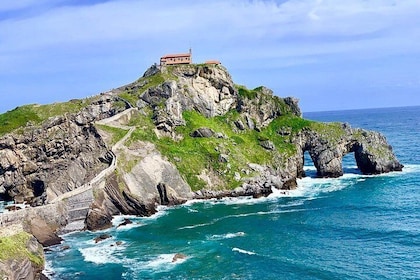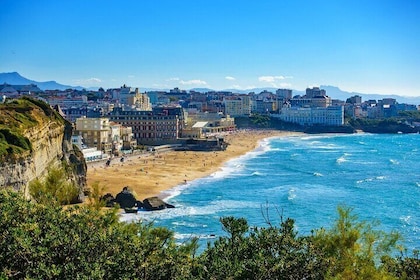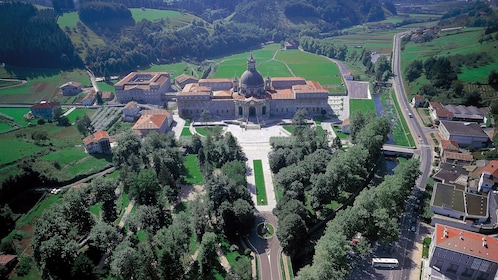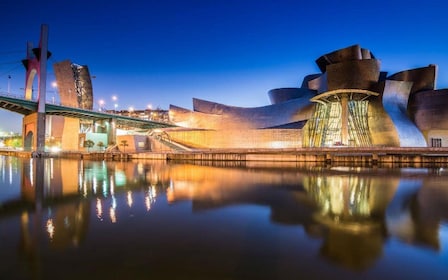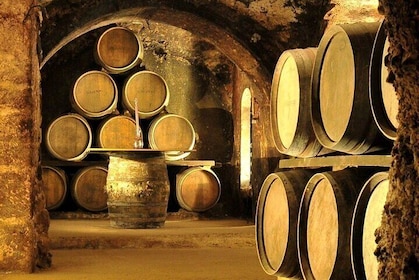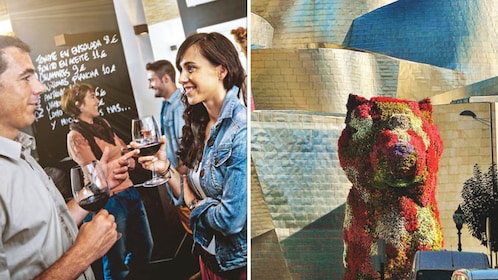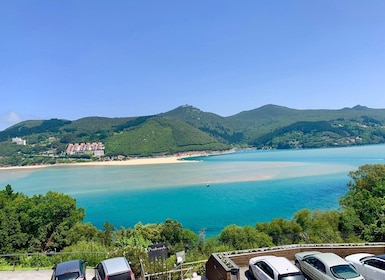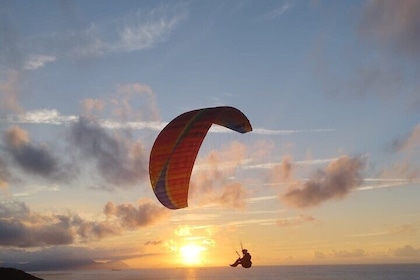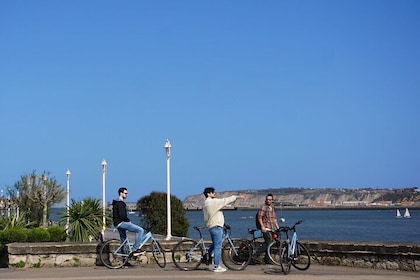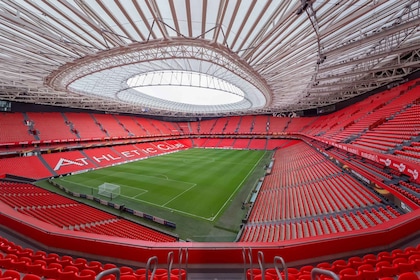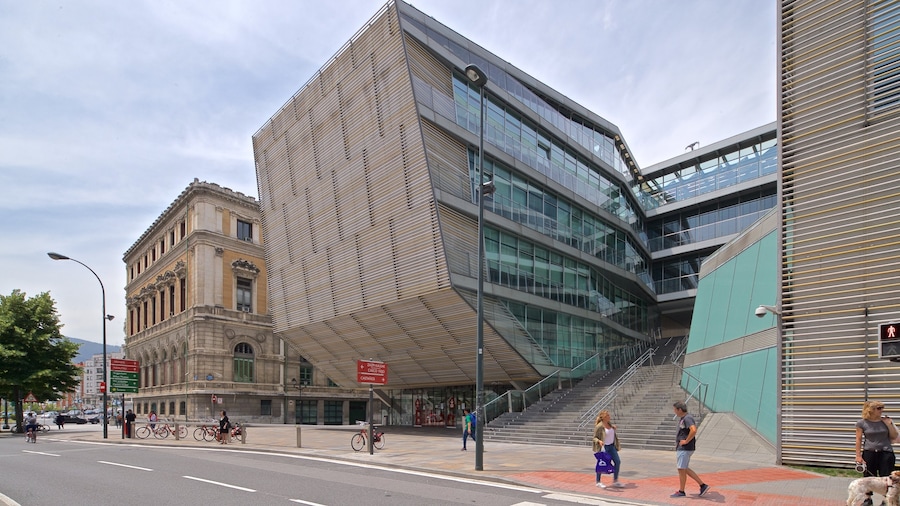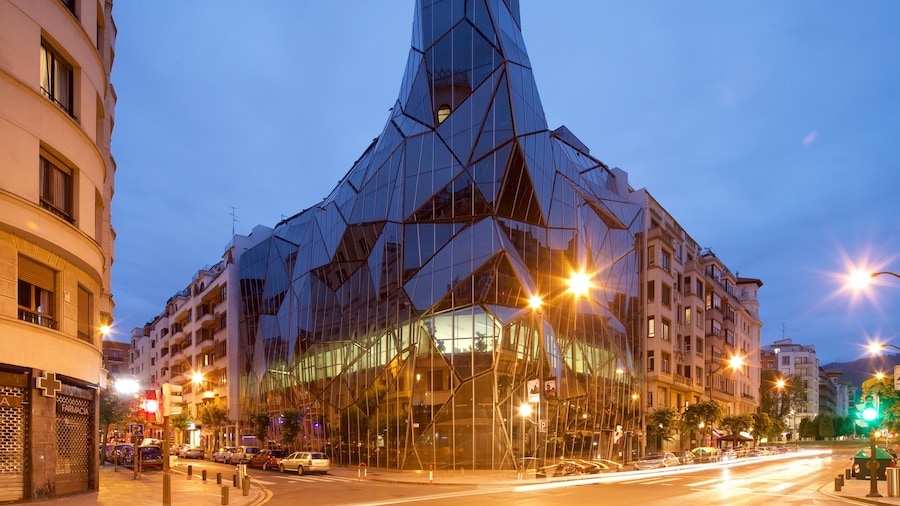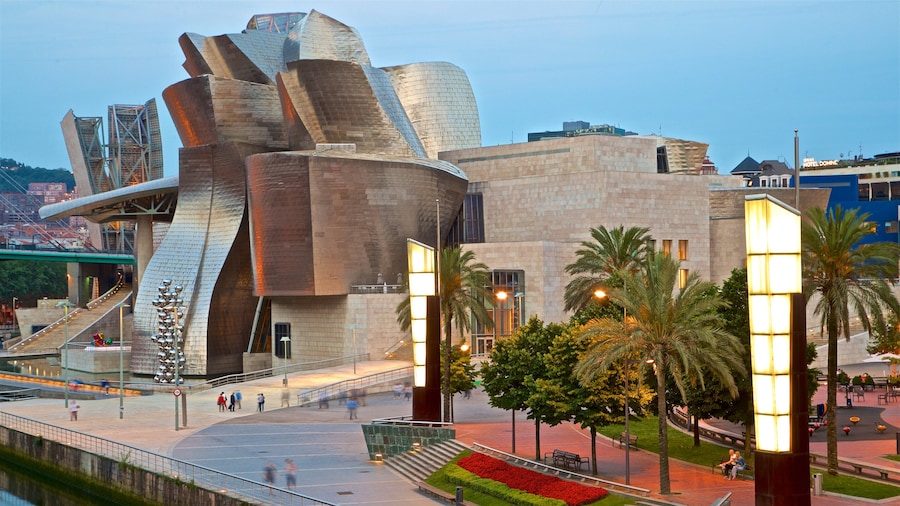Cross by day or by night to enjoy exceptional views from this pedestrianized footbridge, a large white structure connecting two riverside promenades.
During your time in Bilbao walk or cycle across the Zubizuri Bridge, a curved pedestrian footbridge that spans the Nervión River. The sleek steel arched white construction is also known as the Calatrava Bridge after Santiago Calatrava, the Spanish architect who designed it.
Some say the pedestrian crossing resembles the large sails of a boat others that it looks like the backbone of a fish or reminds them of a fish jumping through the water. Either way, it is a glorious sight.
Zubizuri Bridge connects two promenades, the Campo de Volantín Pasealekua on the right bank and Uribitarte Pasealekua on the left bank of the river. As you make your way across, look down at the floor. Most of it is covered by a black non-slip matting. This is because city authorities received numerous complaints after the bridge opened in 1997. When it rained the translucent glass bricks became slippery.
While walking or cycling, stop to enjoy the river views which take in the nearby Isozaki Atea twin towers, the tallest residential buildings in Bilbao.
Once you have crossed go for a wander along the extensive promenades. Campo de Volantín Pasealekua starts at Bilbao City Hall and among the other notable sites surrounding the walkway are the late 19th-century Olabarri Palace and a sculpture called Ovoid Variant of the Unemployment of the Sphere. The Uribitarte promenade starts at City Hall Bridge and finishes at the Guggenheim Museum, one of the most recognizable buildings in the city.
See the bridge and Bilbao's skyline from another perspective by sailing down the river on a boat trip.
Come back to the promenades in the evening for a wonderful view of the bridge illuminated against the night sky. Walk across it again and enjoy the sight of the city's nightscape.
Find Zubizuri Bridge a short walk west of the Plaza de Moraza and south of the Guggenheim Museum.

